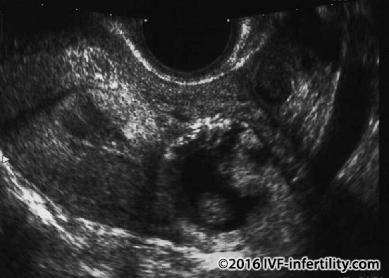How is ectopic pregnancy diagnosed?
Unfortunately, to date, there is no available method of diagnosing ectopic pregnancy with 100% accuracy. A high index of suspicion in patients at risk is the cornerstone of early diagnosis. Recent advances in the measurement of blood beta hCG (the pregnancy hormone), progesterone and the development of high-resolution ultrasound scanning has greatly improved the early diagnosis of ectopic pregnancy and has made it possible to offer conservative treatment. A negative beta hCG result virtually excludes any risk of significant ectopic pregnancy. Repeat measurements of beta hCG over 48 hours periods may be performed to see if it is rising less than 63% or falling .
Ectopic pregnancies not only tend to produce lower levels of these hormones than normal pregnancies, but the levels of these hormones also do not rise as rapidly. A trans-vaginal ultrasound scan is the best test to diagnose ectopic pregnancy. If a transvaginal ultrasound scan is unacceptable to the woman, a trans-abdominal ultrasound scan is an alternative modality. However, this is not as good as trans-vaginal ultrasound scanning. The presence of an adnexal mass adnexal mass, moving separate to the ovary, comprising a gestational sac and fetal pole (with or without fetal heartbeat) is highly specific of ectopic pregnancy. However, it is not always possible to see an ectopic pregnancy with an ultrasound scan, but the diagnosis of ectopic pregnancy is always suspected if the ultrasound scan showed an empty uterus but the pregnancy test is positive and there is free fluid is visualised, either surrounding the womb or in the Pouch of Douglas. Approximately, 10-30% of women with suspected complications of early pregnancy, the the initial ultrasound scan fails to establish a conclusive diagnosis of either ectopic pregnancy or an intrauterine pregnancy. Around 80% of ectopic pregnancies will be on the same side as the corpus luteum cyst, the identification of which may help in the search for an adnexal mass.
Heterotopic pregnancies usually produce hormone levels similar to those of normal intrauterine pregnancies, and in these cases, a vaginal ultrasound scan (which gives a better image of the uterus, tubes and ovaries than abdominal scan), is the main tool for making the diagnosis.
Until recently, laparoscopy was the gold standard method for diagnosis of ectopic pregnancy and is still the method of choice where there is no facilities for performing the blood tests and ultrasound scanning, or the ultrasound is inconclusive. A laparoscopy will be advised to inspect the Fallopian tube and ovaries. However, some small ectopic pregnancies may be missed at the time of laparoscopy. In a severe emergency, for example if a patient collapse, a laparotomy will be needed and a blood transfusion may be required to replace blood loss.

Page:1 2 3 4 5 6 7 8 9 10 11 12 13 14 15 16 17 18 19 20 21 22